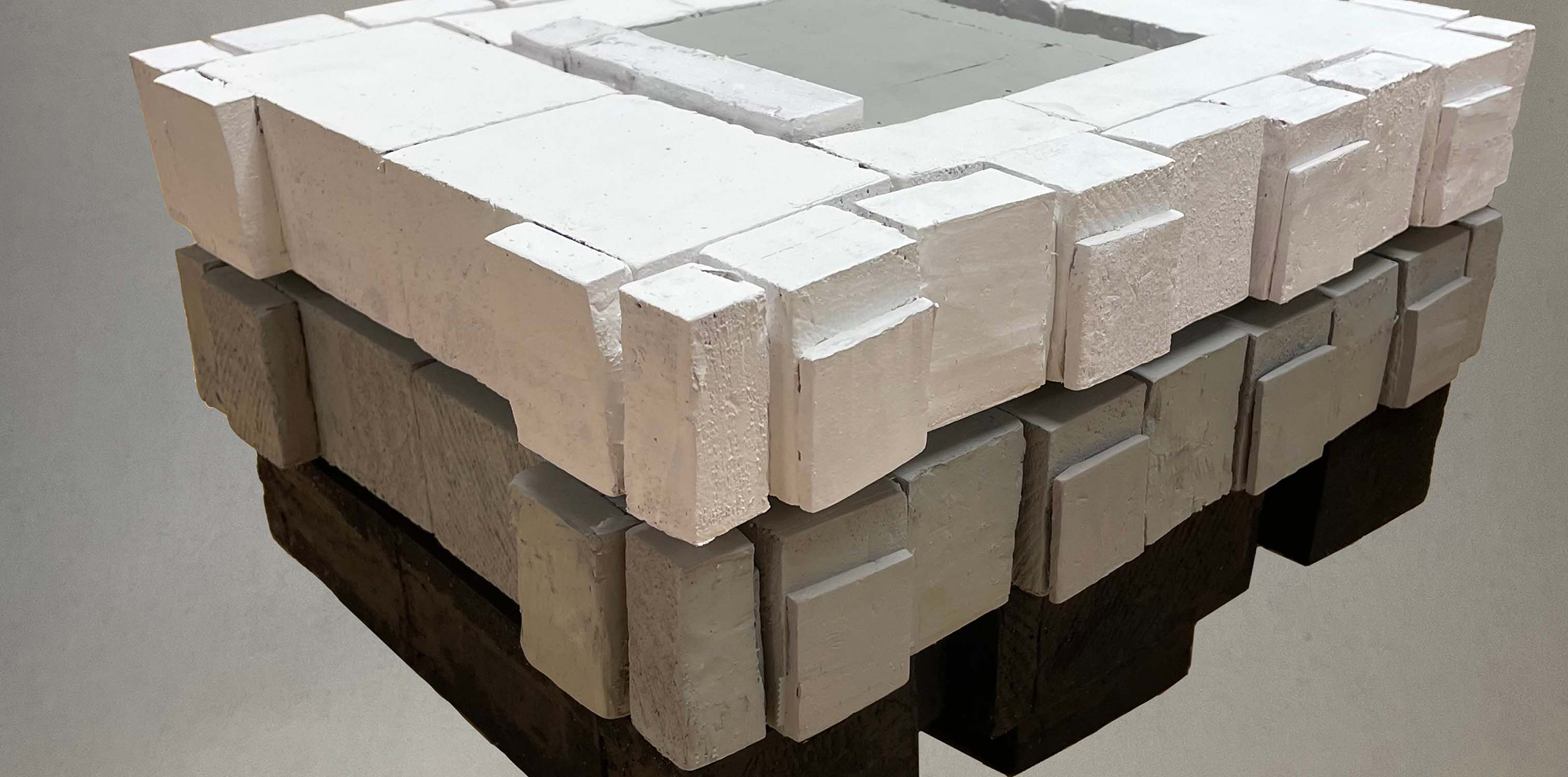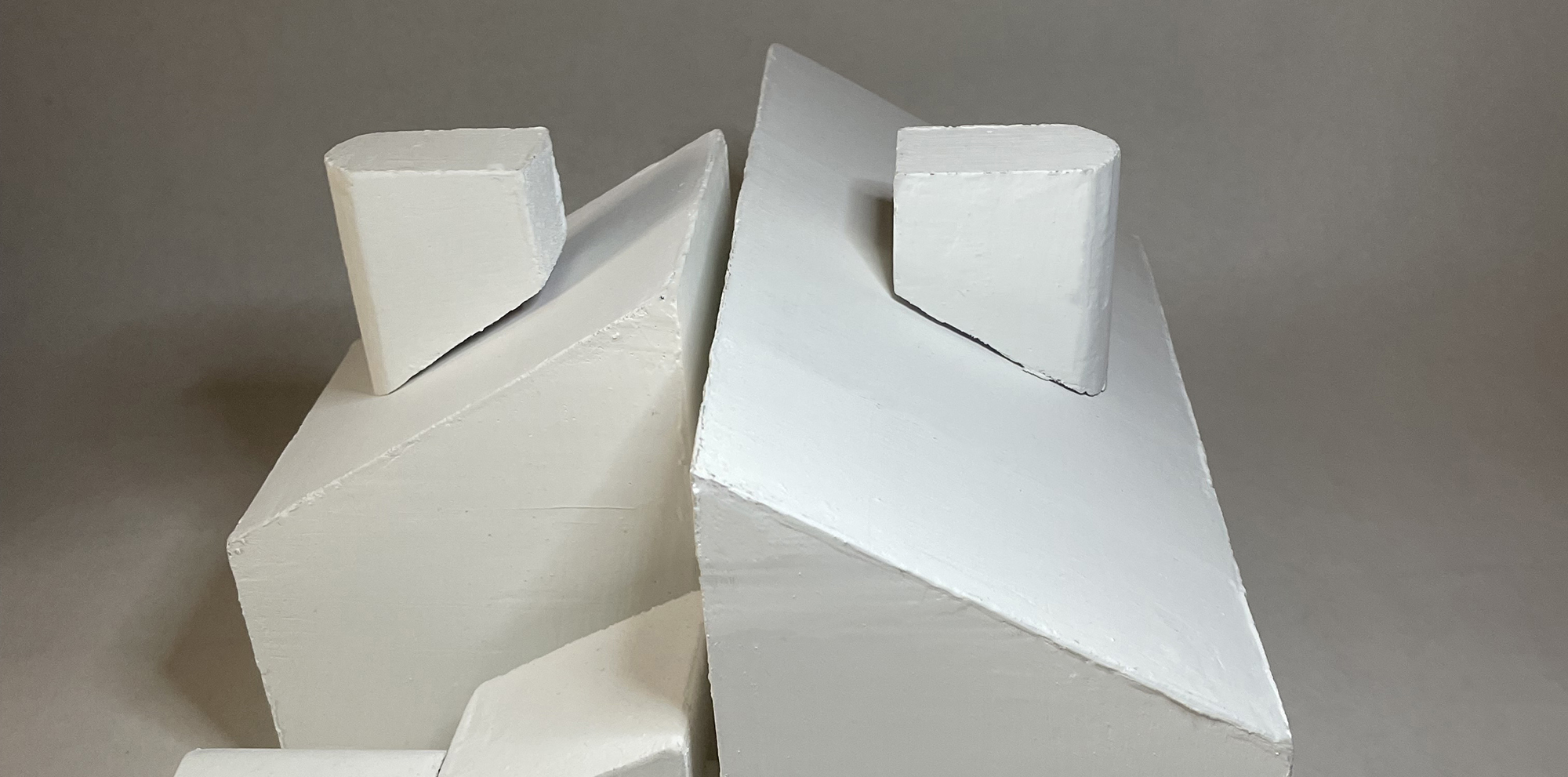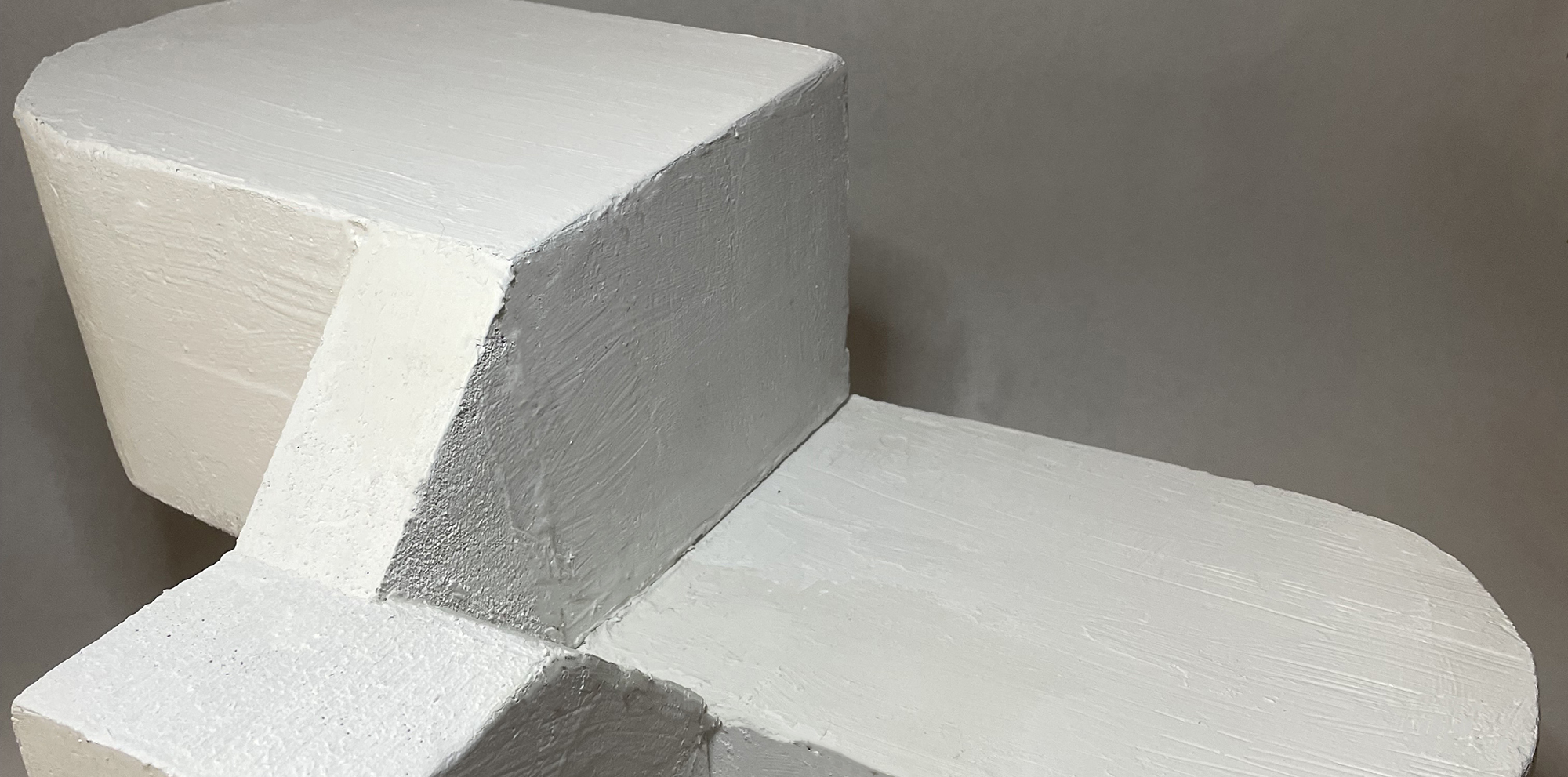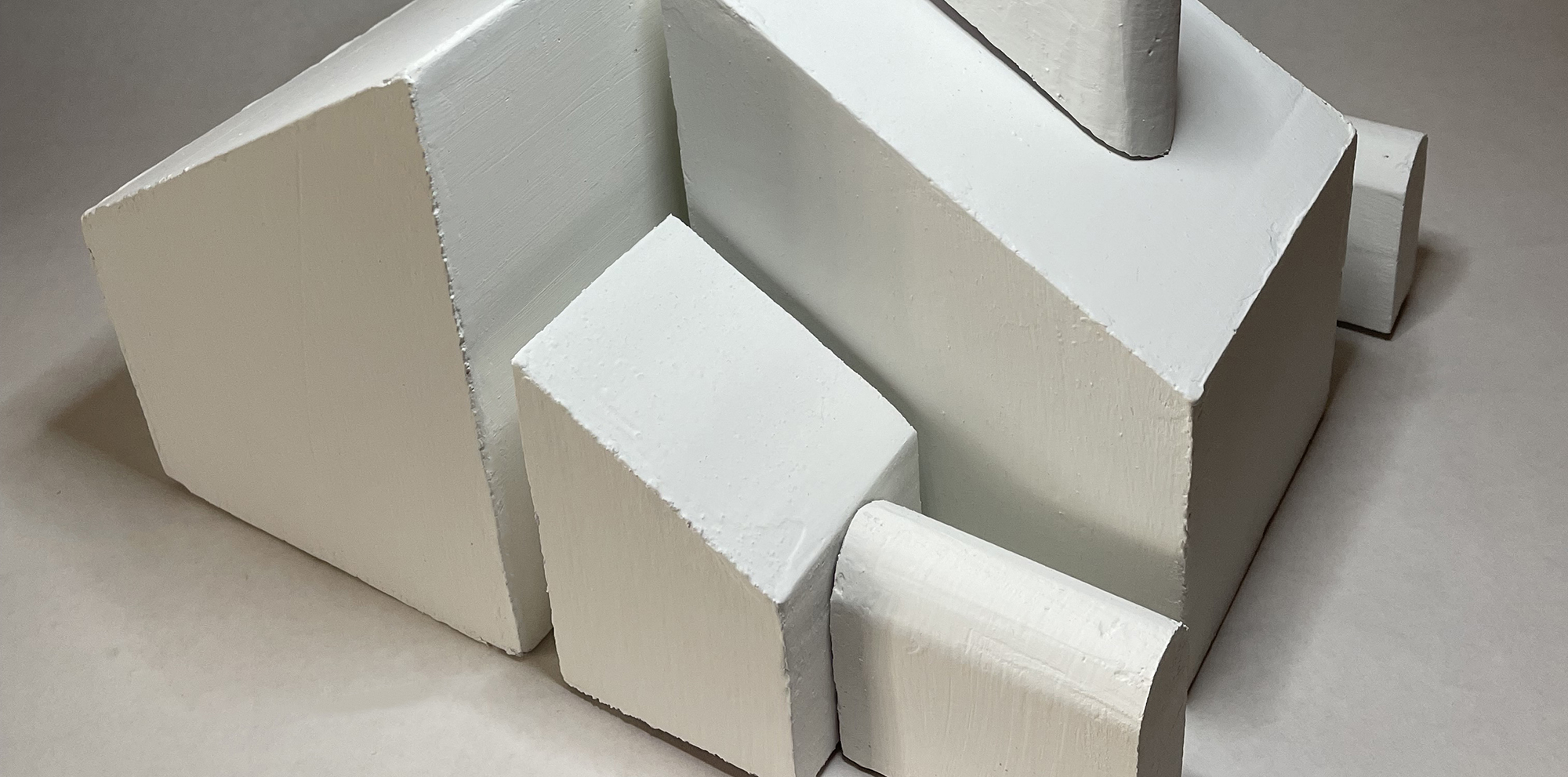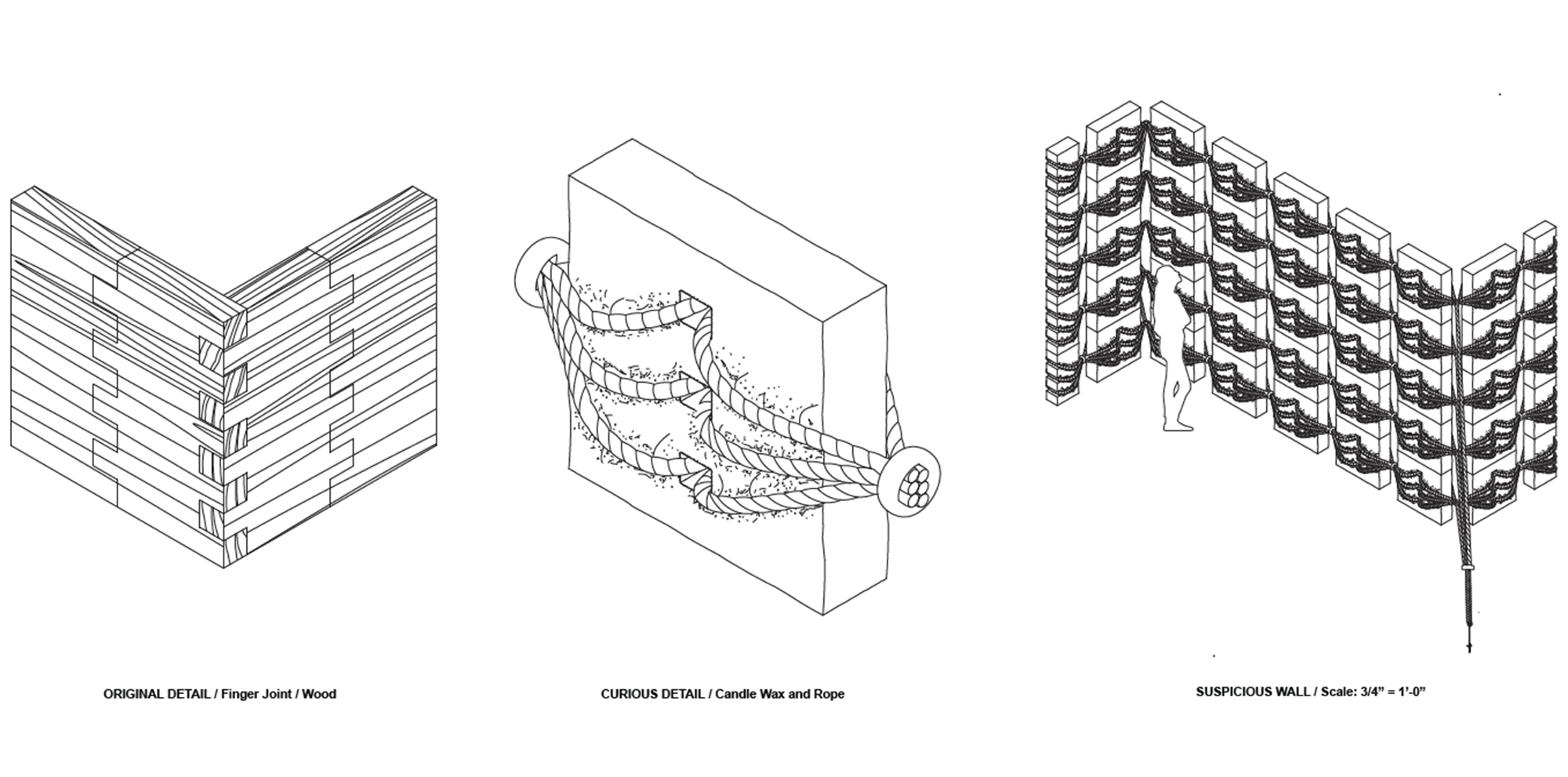Madeline Bartoli
Uncertain Pavilion
From second-year undergraduate studio Assembling Patterns.
Faculty: Ania Jaworska (coordinator), Spencer McNeil, Antonio Torres, Aura Venckunaite, Dan Wheeler
About the studio:
This studio aimed to explore the architectural implications of materials, details, and assembly methods as a way of gaining knowledge and in turn developing design proposals that rely on that research. Students focused on designing alternative methods of assembly and new material combinations. In three exercises throughout the semester, students explored the relationship between surface articulation, material assemblies, and spatial experiences. Finally, the studio produced structural systems that were also design proposals for a volumetric form. We paid special attention to the frictions that emerge by understanding the detail, assembly methods, and pattern as means to produce surface and to translate that surface to volume.
About the project:
The Uncertain Pavilion was created using the materials of wax and rope. The uncommon material of wax as well as the unusual pairing of wax with rope was assembled with the original detail of the Finger Joint in mind. A person’s behavior is changed when experiencing the pavilion as they can interact with the pavilion in various different ways. When an individual walks through the pavilion, they are interrupted by the ropes that are hung above them. The ropes fall down into the person’s path so they must duck underneath them. The viewer can also swing the ropes and touch them, therefore, the ropes become an element within the pavilion. The wax also changes a person’s behavior as the bottom layer of the wax twists and turns so that one can sit on the wax. This interactive aspect of the pavilion allows a person to experience the rope and the wax throughout the structure. Overall, this uncertain pavilion uses an irregular material combination to create an interactive experience where one’s behavior is influenced, through the connection of the finger joint.
Winner of the 2022 Kenneth Schroeder Scholarship Award for an outstanding second-year undergraduate project

